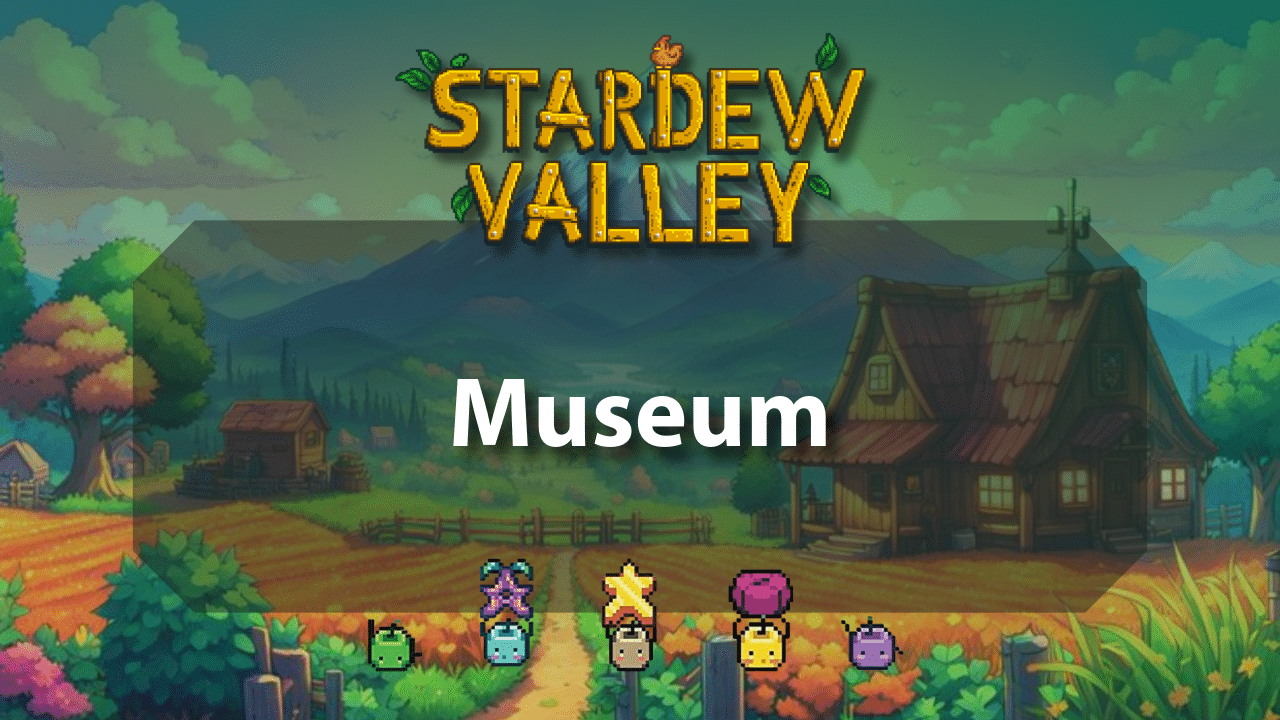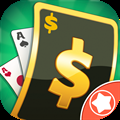
Introduction
The Stardew Valley Museum, located in the southeast corner of Pelican Town just south of the Blacksmith, is a place dedicated to preserving the valley’s rich history and unique geology. When you first arrive, the museum is nearly empty, as the previous curator left and took the entire collection with him. Gunther, the current curator, is eager to rebuild the collection and relies on your help to restore the museum to its former glory. By donating various artifacts and minerals, you can gradually fill the empty display cases and uncover the fascinating history of Stardew Valley.
Artifacts and minerals can be found through a variety of activities. Geodes, which contain minerals, can be obtained by mining rocks in the Mines, the Quarry, and the Skull Cavern, then broken open at the Blacksmith for a chance to reveal a valuable mineral. Artifacts can be discovered by digging up artifact spots scattered across the valley, fishing up treasure chests, defeating certain monsters, or even found in supply crates in the Skull Cavern. Each unique item you donate brings the museum one step closer to completion and earns you rewards from Gunther, including useful tools, decorative items, and even a key to secret locations.
GuntherGunther can always be found at his desk inside the museum, ready to accept donations. However, the museum follows specific hours and is open daily from 8:00 AM to 6:00 PM. On festival days, the museum remains closed, so plan your donations accordingly. As you continue to explore Stardew Valley, gathering rare and valuable items, you’ll slowly transform the museum into a thriving center of knowledge and history, ensuring that the valley’s past is preserved for future generations.
Contributing to the Collection: The Donation Process
Donating to the Stardew Valley Museum is an essential part of restoring its collection and uncovering the valley’s hidden history. As you explore, you will come across a variety of minerals and artifacts that can be contributed to the museum. When you acquire an item that has not yet been donated, its description will indicate: “Gunther can tell you more about this if you donate it to the museum.” This serves as a prompt to bring the item to the museum and add it to the collection.
To make a donation, visit the museum and speak to Gunther at the counter. This will open a dialogue menu where you can select the “donate” option. Once selected, your inventory will appear, allowing you to choose which item to contribute. After selecting an item, you will be prompted to place it in one of the available display slots within the museum’s gallery. The placement of items is entirely up to you, allowing you to arrange the collection in a way that suits your preference.
Gunther will only accept one of each unique item, meaning duplicate artifacts and minerals cannot be donated a second time. However, additional copies of minerals may still have other uses, such as being gifted to villagers, sold for profit, or used in crafting and upgrades. As you continue donating, Gunther will periodically reward you with useful items, including seeds, decorative furniture, rare minerals, and even access to secret locations like the Sewers. The more you contribute, the closer you get to fully restoring the museum’s collection.
In addition to the artifact and mineral displays, the Stardew Valley Museum also functions as a library. Lost Books, which are found by digging up artifact spots or opening treasure chests, are automatically added to the library’s shelves. These books provide valuable insights about the valley, its history, and useful gameplay tips that can help you progress more efficiently. While donating to the museum requires effort and exploration, it plays a key role in preserving Stardew Valley’s past and unlocking valuable rewards.
Reap the Rewards: Incentives for Your Generosity
Donation MilestoneReward DescriptionGeneral RewardsDonating items earns seeds, rare minerals, decorative furniture, and access to hidden locations.Rusty Key (60 Items)Unlocks the Sewers, granting access to Krobus and rare purchasable items, including the Stardrop.Exclusive ItemsDonating specific items unlocks valuable tools, unique decorations, and historical books.Museum CollectionEach new artifact or mineral adds to the valley’s history, revealing lore and insights.Long-Term GoalCompleting the collection provides unique rewards while preserving Stardew Valley’s past.Your contributions to the Stardew Valley Museum not only help restore its collection but also come with valuable rewards that can aid your journey in the valley. Gunther recognizes the effort involved in finding rare minerals and artifacts and offers incentives based on the total number of items donated, as well as for contributing specific pieces. These rewards range from useful resources to unique collectibles, making donations an important part of progressing in the game.
As you continue to donate, you will receive a variety of rewards, including seeds, rare minerals, decorative furniture, and even exclusive access to hidden locations. One of the most notable rewards is the Rusty Key, granted after donating 60 items, which allows entry into the Sewers where Krobus resides. Within the Sewers, you can purchase rare items, including the Stardrop, which permanently increases your maximum energy. Other rewards include valuable tools for farming and mining, books that provide insights into the valley’s history, and unique decorations that enhance your farmhouse or farm.
Donating also adds depth to the museum’s collection, allowing you to uncover interesting details about the artifacts and minerals found throughout Stardew Valley. Each new item provides a small piece of the valley’s history, making the museum an evolving testament to your discoveries. While completing the entire collection is a long-term goal, every contribution brings you one step closer to unlocking helpful items, uncovering new locations, and preserving the valley’s past for future generations.
Rewards Based on Total Donations
Donation MilestoneReward 5 Items9 Cauliflower Seeds 10 Items9 Melon Seeds 15 Items1 Starfruit Seed 20 Items‘A Night on Eco-Hill’ (painting) 25 Items‘Jade Hills’ (painting) 30 ItemsLarge Futan Bear (furniture) 35 Items9 Pumpkin Seeds 40 ItemsRarecrow #8 + “Treasure Trove” achievement 50 ItemsBear Statue (furniture) 60 ItemsRusty Key (grants access to the Sewers) 70 Items3 Triple Shot Espresso 80 Items5 Warp Totem: Farm 90 ItemsMagic Rock Candy 95 ItemsStardrop + “A Complete Collection” achievementAs you reach specific milestones in the total number of items donated to the Stardew Valley Museum, Gunther will reward you with a variety of useful items and unique decorative pieces. These rewards are given based on the total count of donations, regardless of which specific minerals or artifacts are contributed. Early milestones provide seasonal seeds, such as Cauliflower, Melon, Starfruit, and Pumpkin Seeds, which can help expand your farm. As you continue donating, decorative items like paintings and furniture become available, including ‘A Night on Eco-Hill,’ ‘Jade Hills,’ and a Large Futan Bear.
Reaching 40 donations unlocks Rarecrow #8 and grants the “Treasure Trove” achievement. At 50 donations, you receive a Bear Statue, while reaching 60 donations is particularly significant, as it earns you the Rusty Key. Gunther delivers this key the following day, allowing access to the Sewers, where Krobus sells rare items, including a Stardrop. Higher milestones provide additional rewards, such as Triple Shot Espresso for extra speed, Warp Totems for fast travel to your farm, and the powerful Magic Rock Candy. The final reward, obtained after donating all 95 required items, is a Stardrop, permanently increasing your maximum energy, along with the “A Complete Collection” achievement.
Earning the “Treasure Trove” and “A Complete Collection” achievements also unlocks new hats that can be purchased from the hat-selling mouse in the abandoned house in Cindersap Forest. Completing the museum collection is a long-term challenge, but the rewards make the effort worthwhile, offering valuable items and exclusive access to new areas that enhance your experience in Stardew Valley.
Rewards for Donating Minerals
Mineral DonationsReward11 MineralsStanding Geode (decorative furniture)21 Minerals
Singing Stone (emits a chime when struck)31 Minerals
Obsidian Vase (decorative furniture)41 Minerals
Crystal Chair (decorative furniture)50 Minerals
Crystalarium (replicates minerals over time)
In addition to the rewards given for overall museum donations, Gunther also offers special incentives for donating minerals. There are 53 unique minerals that can be contributed to the Stardew Valley Museum, and reaching specific milestones in mineral donations grants exclusive rewards. These rewards primarily include decorative furniture, but the most valuable prize is a functional item that can help generate valuable resources over time.
When you donate 11 different minerals, Gunther rewards you with the Standing Geode, a decorative piece that can be placed inside your home. Upon reaching 21 mineral donations, you receive the Singing Stone, which emits a unique chime when struck. At 31 minerals, you unlock the Obsidian Vase, a stylish piece of furniture that adds to your farmhouse decor. When 41 minerals have been donated, Gunther grants you the Crystal Chair, another decorative item that adds a touch of elegance to your collection.
The most valuable reward for mineral donations comes at 50 total minerals, where you receive the Crystalarium. This machine allows you to replicate any mineral placed inside, producing an identical copy over time. The replication time varies depending on the mineral, with more valuable gems taking longer to reproduce. The Crystalarium is particularly useful for generating high-value gems such as Diamonds, which can be sold for profit, used in crafting, or gifted to certain villagers who appreciate them. Unlike other rewards, the Crystalarium is a functional tool that can provide a consistent source of income and resources.
While only 50 of the 53 available minerals are required to obtain the Crystalarium, donating all 53 minerals is necessary to complete the museum collection and earn the “A Complete Collection” achievement. This achievement is significant because it rewards you with a Stardrop, permanently increasing your maximum energy. Completing the mineral collection not only helps restore the museum but also provides both aesthetic and practical benefits that enhance your overall experience in Stardew Valley.
Rewards for Donating Artifacts
Artifact DonationsReward 3+ Artifacts (including Ancient Drum) Drum Block (musical furniture) 3+ Artifacts (including Bone Flute) Flute Block (musical furniture) 5+ Artifacts (including Chicken Statue) Chicken Statue (decorative furniture) 11 Artifacts (including Rare Disc & Dwarf Gadget) ‘Burnt Offering’ (painting) 15 ArtifactsSkeleton Statue (decorative furniture) 20 Artifacts Rarecrow #7 (decorative scarecrow) Ancient Seed Ancient Seed (plantable) + Ancient Seeds recipe Prehistoric Skull, Skeletal Hand, Prehistoric Scapula Sloth Skeleton L (decorative furniture) Prehistoric Rib, Prehistoric Vertebra Sloth Skeleton M (decorative furniture) Prehistoric Tibia, Skeletal Tail Sloth Skeleton R (decorative furniture) Dwarf Scrolls I, II, III, IVDwarvish Translation Guide (allows communication with the Dwarf)
The rewards for donating artifacts to the Stardew Valley Museum are tied to both the total number of contributions and specific items or combinations. There are 42 unique artifacts to discover, and donating them helps uncover the valley’s history while granting valuable rewards. Some artifacts unlock decorative items, while others provide access to new areas or useful crafting recipes.
Early artifact donations can reward players with musical furniture. Donating at least three artifacts, including the Ancient Drum, grants the Drum Block, which plays a sound when walked over. Similarly, donating at least three artifacts, including the Bone Flute, rewards the Flute Block, which produces a flute sound. The Chicken Statue is awarded for donating five or more artifacts, provided that the Chicken Statue artifact is among them. At 11 artifact donations, if both the Rare Disc and the Dwarf Gadget have been contributed, Gunther rewards the player with the ‘Burnt Offering’ painting, a decorative piece for the farmhouse.
As more artifacts are donated, additional rewards become available. Reaching 15 total artifact donations grants the Skeleton Statue, while donating 20 artifacts unlocks Rarecrow #7, a unique scarecrow design. Some artifacts unlock particularly useful rewards, such as the Ancient Seed. Donating this rare item provides a plantable Ancient Seed and the crafting recipe to produce more, making it a valuable addition to any farm.
Certain prehistoric artifacts contribute to a set of skeleton decorations. Donating the Prehistoric Skull, Skeletal Hand, and Prehistoric Scapula unlocks Sloth Skeleton L. Contributing the Prehistoric Rib and Prehistoric Vertebra rewards the Sloth Skeleton M, while the Prehistoric Tibia and Skeletal Tail grant the Sloth Skeleton R. These skeleton pieces can be displayed in the farmhouse for a unique prehistoric theme.
A particularly important artifact set is the collection of Dwarf Scrolls. Donating all four Dwarf Scrolls (I, II, III, and IV) unlocks the Dwarvish Translation Guide. This key item allows players to understand and communicate with the Dwarf who resides in the Mines, granting access to rare goods. Completing the museum’s artifact collection is a challenging but rewarding endeavor, providing a mix of decorative, functional, and gameplay-enhancing rewards that contribute to your journey in Stardew Valley.
Strategic Donations: Items to Consider Keeping
While completing the Stardew Valley Museum offers valuable rewards, some rare items have alternative uses that can be beneficial early in the game. The Prismatic Shard, one of the rarest minerals, is required to obtain the powerful Galaxy Sword when brought to the center of the three obelisks in the Calico Desert. Since the Galaxy Sword is a significant upgrade for combat, it may be worth holding onto the first Prismatic Shard you find rather than donating it immediately.
ItemAlternative UseMuseum Contribution Benefit Prismatic ShardUsed to obtain the Galaxy Sword in the Calico DesertRequired for museum completion Dinosaur EggCan be incubated in a Big Coop to hatch a Dinosaur, which produces more Dinosaur EggsCounts toward artifact donation DiamondUsed in crafting, gifting, and can be replicated in a Crystalarium for steady incomeRequired for museum completionSimilarly, the Dinosaur Egg is a rare artifact that can be incubated in a Big Coop to hatch a Dinosaur, which will then produce more Dinosaur Eggs over time. This allows for a sustainable source of Dinosaur Eggs for donation, gifting, or selling. Another valuable mineral to consider keeping is the Diamond, which is used in crafting, gifting, and can be replicated using a Crystalarium. Having an early source of Diamonds can be useful for generating consistent income or maintaining a steady supply for recipes and villager relationships.
While holding onto these items can be helpful in the early stages, donating them to the museum remains important for overall progression. Completing the collection unlocks key rewards, including access to the Sewers and a Stardrop that permanently increases energy. Striking a balance between personal use and museum contributions ensures steady progress while maximizing the benefits of rare finds in Stardew Valley.
Curate Your Collection: Rearranging the Museum
FeatureDescriptionRearranging DonationsItems can be moved at any time by interacting with the ledger to the left of Gunther’s desk.Display OrganizationPlayers can group items by type, color, or create a visual story of their discoveries.Available Display SlotsThe museum has 102 slots, while only 95 unique items can be donated, allowing extra space for customization.Customization BenefitsOrganizing the museum makes it visually appealing, easier to navigate, and adds a personal touch to the collection.Once you begin donating items to the Stardew Valley Museum, you have the freedom to rearrange them at any time. By interacting with the ledger to the left of Gunther’s desk, you can move artifacts and minerals around the display cases to create a layout that suits your preference. Some players may choose to group minerals and artifacts separately, arrange them by color, or organize them in a way that tells a visual story of their discoveries.
The museum provides 102 available display slots, while only 95 unique items can be donated, allowing for some extra space to refine the arrangement. This flexibility ensures that as your collection grows, you can adjust the layout to keep it visually appealing and organized. Customizing the museum’s arrangement not only makes the collection easier to navigate but also adds a personal touch to restoring this important part of Stardew Valley’s history.
Location and Hours of Operation
The Stardew Valley Museum is conveniently located in the southeast corner of Pelican Town, just south of Clint’s Blacksmith. It serves as the primary location for donating artifacts and minerals, helping to restore its once-empty displays. The museum operates daily from 8:00 AM to 6:00 PM, allowing plenty of time to stop by and contribute new finds. However, it remains closed on days when town festivals take place, so planning donations around these events is important. Visiting regularly ensures steady progress in completing the collection and unlocking valuable rewards.
Embark on Your Archaeological Adventure
The Stardew Valley Museum offers an engaging and rewarding experience that encourages players to explore, collect, and contribute to the town’s history. As you journey through the valley, you’ll uncover a variety of artifacts and minerals by digging in the soil, fishing treasure chests, breaking open geodes, and mining deep within the caves. Each discovery plays a role in restoring the museum’s collection, turning it from an empty building into a thriving center of knowledge and history. Gunther, the museum’s curator, eagerly accepts these contributions and offers a range of valuable rewards based on the number and type of items donated.
Donating to the museum is not only beneficial for obtaining unique items but also for unlocking key game mechanics. Completing certain milestones grants rare rewards, including decorative furniture, useful crafting recipes, and even access to restricted areas. One of the most important rewards is the Rusty Key, which is given after donating 60 items. This key allows access to the Sewers, where players can interact with Krobus, purchase rare goods, and eventually obtain the Statue of Uncertainty to respec their skills. Additionally, donating the four Dwarf Scrolls unlocks the Dwarvish Translation Guide, enabling communication with the Dwarf in the Mines and opening up access to valuable combat supplies.
As you work toward completing the collection, organizing the museum’s layout becomes an opportunity for creativity. The museum provides 102 available display slots for the 95 unique donatable items, allowing some flexibility in arrangement. You can group artifacts and minerals separately, sort them by color, or create your own unique display. If you ever want to rearrange your contributions, you can interact with the ledger near Gunther’s desk to move items around freely. This customization adds a personal touch to the museum, making it more than just a collection of items—it becomes a reflection of your discoveries and progress.
Achieving the “A Complete Collection” status is a major milestone in Stardew Valley, signifying that you have uncovered all the valley’s hidden treasures. The final reward for completing the museum is a Stardrop, which permanently increases your maximum energy, allowing for longer days of farming, mining, and exploration. Along the way, earning the “Treasure Trove” and “A Complete Collection” achievements unlocks new hats for purchase from the hat shop in Cindersap Forest, offering an additional way to showcase your accomplishments.
Whether you are hunting for rare artifacts, cracking open geodes in search of valuable minerals, or carefully planning your museum layout, every contribution brings you closer to completing the collection. With each donation, you help restore a vital piece of Stardew Valley’s history while earning rewards that enhance your journey. Gunther is always ready to accept new discoveries, so grab your tools, explore the valley, and uncover the secrets waiting beneath the surface.













